
Home |
About Us |
How to Participate |
Biodiversity Modules |
Projects |
Maps |
News |
Resources

Home |
About Us |
How to Participate |
Biodiversity Modules |
Projects |
Maps |
News |
Resources
|
Definition of "Deciduous forest" - General Code 700: Forests composed primarily of deciduous trees. Note: Urban areas with a lot of large trees are not forests; use the developed code. |
Forest: Deciduous forest (771)
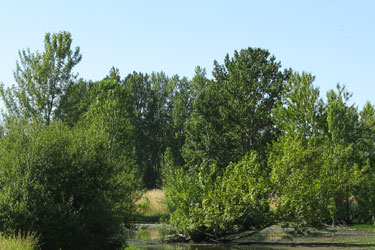 | Descriptive Habitat Code: Deciduous forest (7), intermediate in age (7), with an open canopy (1).
Deciduous refers to trees or shrubs that lose their leaves seasonally. |
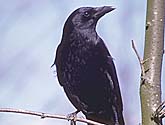 American crow Corvus brachyrhynchus Code: COBR Photo: RA |
Distribution and Habitat: It is found in a wide variety of natural and urban (developed) habitats. Diet: Interesting fact: |
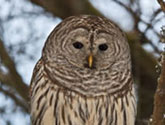 Barred Owl Strix varia Code: STVA Photo: Natures Pics |
Distribution and Habitat: Barred owls live in forested areas, from swamps and riparian areas to uplands. The species prefer large blocks of forest. Diet: Interesting fact: |
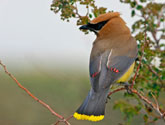 Cedar Waxwing Bombycilla cedrorum Code: BOCE Photo: Natures Pics |
Distribution and Habitat: Waxwings are most commonly found in all types of forests and other wooded areas, orchards, suburbs, parks, and gardens. Diet: Interesting fact: |
 Coyote Canis latrans Code: CALAT Photo: RA |
Distribution and Habitat: It is found in mountainous areas, grasslands, deciduous and mixed coniferous forests and even urban areas. Diet: Interesting fact: |
 Eastern gray squirrel Sciurus carolinensis Code: SCCA Photo: TFK |
Distribution and Habitat: It is found throughout deciduous woodland areas of North America as well as being a common inhabitant of developed areas of towns, cities, residential and even industrial areas. Diet: Interesting fact: |
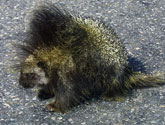 Porcupine Erethizon dorsatum Code: ERDO Photo: Natures Pics |
Distribution and Habitat: Porcupines live in forests throughout most of the western United States and parts of the Northeast. They are also found throughout forests in Canada. Diet: Interesting
fact: |
 Raccoon Procyon lotor Code: PRLO Photo: KMD |
Distribution and Habitat: It is native throughout most of the United States and southern Canada, but has also been introduced into Europe and Asia. It is a common inhabitant of agricultural and residential areas. Diet:
Interesting fact: |
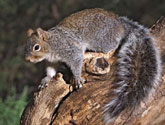 Western gray squirrel Sciurus griseus Code: SCGRI Photo: Natures Pics |
Distribution and Habitat: They can be found in Washington, Oregon, California, and in a small part of Nevada. Western grey squirrels are found in oak woodlands and coniferous forests. This species is listed as threatened in Washington State. The Eastern gray squirrel is an introduced species and may be a primary reason why the Western gray squirrels are declining. Diet: Interesting fact: |
Home |
About Us |
How to Participate |
Biodiversity Modules |
Projects |
Maps |
News |
Resources